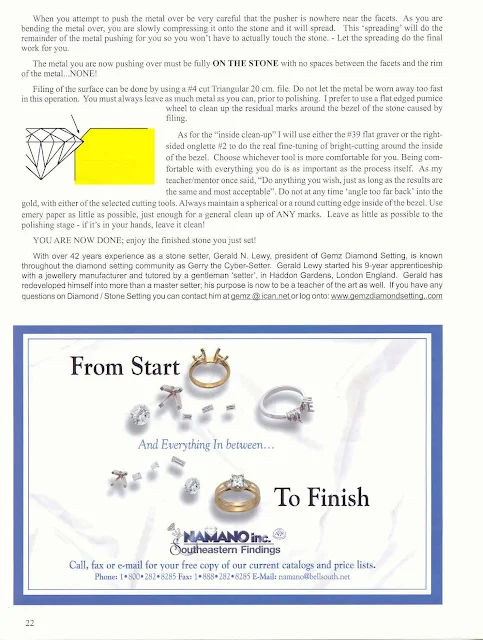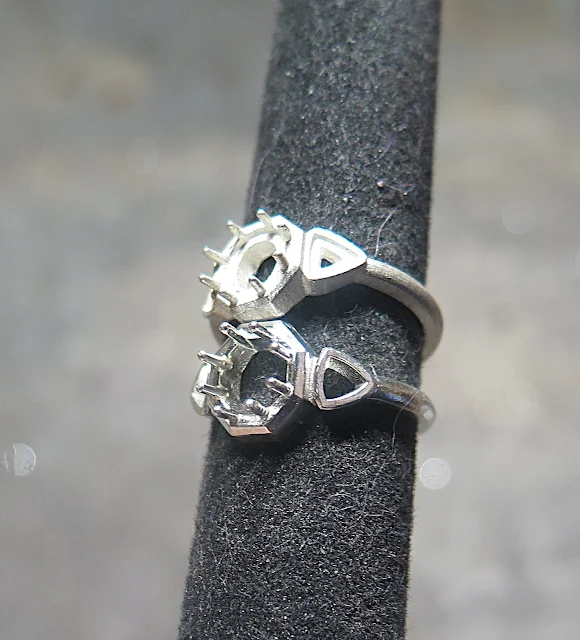1) After the stone has been set into the metal, remember to 'Bright Cut' the metal around the stone. This photo is the 'epitome of gemsetting perfection'.
2) This "Bright-Cutting" technique can be made with an Onglette graver that has been highly polished on the cutting side.
3) Please do not use a 'Flat-shaped graver' as the blade might touch the Facets and leave a 'rippling edge' around the bezel.
4) I would personally use Pumice wheels and gently smooth all of the surfaces nearest to the stone. Use #180 grit, then followed by #1,000 grit. Then the ring will be a wonderful thing to behold.
If you think that setting these many sizes of stones is easy, you are looking at 5 different sizes of gemstones. By the way, have the surface of the ring Tripoly-polished before stone setting. If you polish the metal after the stone setting, some of the stones might get loose! All that is needed is to 'gently' Rouge the surface.
If you have aspirations of attempting to set these gemstones, think twice. Why? Those odd-shaped stones could be a real nightmare to the jeweller or novice setter.
First, create the ring with the aid of CAD and use the computer-aided design program to guide you. There are many sizes & shapes of baguettes to contend with.
Around each of these stones were a 'Bright-Cut' to visually finish the gemstone setting.
If you need a library of 'additionally' selected Gypsy or Flush mounted stones just click on to "FLUSH SETTING".
Instead of a ream of words for you to absorb, the above diagram is just for you. "Enjoy, read and learn." - Gerry Lewy.







.JPG)
.JPG)
.JPG)
.JPG)
.JPG)























.jpg)



